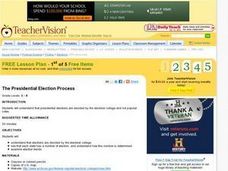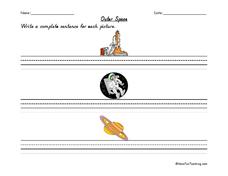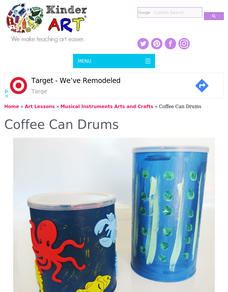Curated OER
American Revolution
Students create a magazine in Microsoft Publisher. In this magazine lesson plan, students create a magazine about the American Revolution using the publishing program.
Curated OER
Know Your Computer Hardware #103
Young scholars discover the different terms and parts of a computer's body. In this computer basics lesson, students become familiar with the parts of the computer, starting in kindergarten and increasing their knowledge through...
Curated OER
Map Making/Floor Plans/Map Reading
Students apply their knowledge of scale when mapping the classroom. They determine the use of a map legend and orient a map using a compass. They create the classroom maps using transfer graph paper.
Curated OER
The Presidential Election Process
Students examine the presidential election process and discover that presidential elections are decided by the electoral college and not popular votes. They see that each state has a number of electors, and understand how this number is...
Curated OER
Adverbs
In this adverbs worksheet, students practice their grammar skills as they read 7 sentences and identify the adverbs in each of the sentences.
Curated OER
Wiggly Spiders
Young scholars create "wiggly spiders" using black paint, construction paper, yarn, and their hands in this fun, messy, art lesson for the early elementary classroom. An ideal lesson for the Halloween holiday or for a lesson/unit on...
Curated OER
Outer Space
In this space worksheet, students write a sentence for each picture. The pictures show a space shuttle, an astronaut, and a planet.
Curated OER
Grade 3 Singapore Math #8: Money, Time, Mass, Volume and Length
In this Singapore Math grade 3 worksheet, students complete 20 word problems using money, time, volume, mass and length. An answer key is included.
Homeschool Math
Homeschool Math: Equivalent Fractions
Lesson teaches the concept of equivalent fractions. Accompanying video shows how to get an equivalent fraction by splitting the existing pieces further into a certain number of new pieces.











